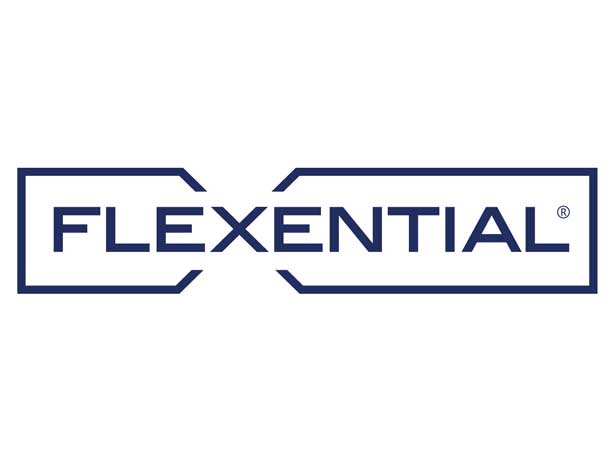Flexential’s CEO On ‘The New World Order’ Of The GPU-Driven Data Center
‘Ultimately, the data center space is what makes this all real,’ Flexential CEO Chris Downie tells CRN, adding that the secondary data center markets are poised for growth.

Until a few months ago, the data center space had been built to optimize compute, but the need to push bigger graphic processes for generative AI has created a “new world order” in which data centers like Flexential are one of only a handful of providers able to compete, CEO Chris Downie told CRN.
“We’re pretty excited about the ability of our next-generation infrastructures to support these GPU environments which, not all, I’d say traditional data centers are capable of, and so there’s a new world order, if you will,” he said.
Downie said GPU workloads need more space for bigger cabinets and more power – between 30 to 50 kilowatts of electricity — as well as the federation capabilities to take the data and scale it, and then deliver it where it needs to go. The traditional big data center markets are built for the smaller rack sizes and lower power caps needed to run CPU workloads.
[RELATED: 10 Data Center Companies You Need To Watch In 2023 ]
“Those raw materials, land and power, in particular have become, I’d say more constrained than ever in those traditional data center markets be it in North Virginia, Santa Clara, New York, New Jersey, Chicago, and so while there’s still capacity there, that consumer has had to migrate to solutions that are more geodiverse than they’ve ever, ever been before,” he said. “We obviously have been in what I’ve called secondary markets for almost 20 years now building scale and brand recognition.”
The generative AI market is nascent at this stage, but Downie and Flexential — a CRN Cloud 100 company — are among those gearing up for its arrival. Dell Technologies, Lenovo, Broadcom, HPE, nearly all the major infrastructure providers see demand coming from the need to create and train large language models, as well as the capacity to ping those models with queries.
Both activities require massive amounts of graphic processors, which the data center has not been built to prioritize, which Downie said gives the secondary data center markets inside of U.S. coast strongholds a new ability to compete for enterprise customers.
“I think we’re all watching this fast train come in related to AI and GPU infrastructure but when it first began manifesting in terms of prospective customers looking to secure compute environments, given the pace, I really had to ask myself early, do I recognize this as an opportunity that is going to become real? If you think of like the onset of the cloud, it was a concept and then all of a sudden there was a ton of engagement, and it became very real and very big. And I think, as I mentioned earlier, GPU infrastructure is presenting a new form of cloud resource or dynamic elastic compute.”
Flexential announced earlier this month that it is adding capacity to its Hillsboro, Ore.-based facility, as well as in Atlanta, all as part of its FlexAnywhere Platform. The company added capacity to its Denver Englewood Data Center last year. Flexential has three million square feet of data center space in 19 markets.
“We’re making investments and those investments are, I’d say, emboldened, if you will, by the really the demand that we’re seeing which is back to where we started this conversation. It’s fairly unprecedented over the course of the last 18 months. I mean, the digital-driven economy continues to expand and I’d say with this new this new GPU slash AI, opportunity. It’s going to it’s going to accelerate even more.”

Right now there is so much going on in the data center space. There was already a massive need for compute and storage before the generative AI craze kicked off. Now with that, on top of deploying hybrid cloud architecture, and scaling across clouds, it seems like all these business needs are coming together for you folks.
I think you’ve touched on a lot of different things which are really converging on the importance of the data center to enable, I’d say a host of different applications.
Obviously those applications are becoming more robust than they’ve ever been before in terms of the onset of GPU infrastructure to support next generation compute work requirements that are going to span not only the hyper-scalers that are obviously enabling the cloud compute resources, but also, the GPU infrastructure is something that they all have to enable, in addition to their CPU infrastructure that I’d say the traditional Cloud has been built on, which is really a new wave of, of cloud.
Ultimately, I think GPU infrastructure is going to present an equal opportunity of really unprecedented compute capability for the enterprise. Be it Health care, financial, or what have you.
The current cloud, was built to support the ability for the enterprise to leverage more elastic compute to support different applications and, and workloads. It was never built to process the density of compute the GPU and infrastructure is now capable of.
So there’s this new generation of compute that I think ultimately has to solve within a next generation data center environment, which has all the capabilities that we’ve been focusing on building over the last decade.
Our latest generation environments are capable of handling the GPU infrastructure, which is generally , either higher cabinet requirements to support more scaled infrastructure to, 30 to 50 Kw a cabinet to, th need to have the Federation capabilities to take that data and in scale and deliver it to where it needs to go.
We’re pretty excited about the ability of our newest generation, really next generation infrastructures ability to support these GPU environments, which not all, I’d say traditional data centers are capable of, and so there’s a new world order, if you will.

There were all of these major constraints on the data center prior to the onset of the generative AI demand, whether it was real estate, or power, or compute and now you add generative AI into this mix. Where do you find the capacity? How should we be thinking about that?
Yeah, so I guess first of all, I’d say in the emergence of the cloud, a lot of the scale concentrated and I’d say the traditional Tier 1 data center market. Northern Virginia obviously got more data centers than any other than any other market by multiples.
But those raw materials as you mentioned, land and power, in particular have become, I’d say more constrained than ever in those traditional data center markets be it North Virginia. Santa Clara, New York, New Jersey, Chicago, and so while there’s still capacity there, the consumption has had to migrate to solutions that are more geo diverse than they’ve ever been before.
And we’ve been in what have been called ‘secondary markets’ for almost 20 years now, building scale, brand recognition.
Now those larger scale consumption sets can’t find the raw materials, necessarily, as quickly as they, as they would like. They’re very much coming to our markets where I’d say those raw materials are more readily available.
That geodiversification wouldn’t be possible if it wasn’t for the maturity of the of the network reach that enables those environments. You can’t just put a data center like that in the middle of nowhere. So the network maturity, the network prevalence, if you will, is more readily available in secondary markets than it was a decade ago.

As a secondary market-focused data center provider, this seems like a pretty enviable position to be in when it comes to the ability to build out these GPU-focused, AI-focused data centers?
There’s still there’s still a lot of capacity there. There’s still a lot of CPU based compute environments there. But that being said, I think that the easy button was to go to Ashburn because everybody was going to Ashburn but now that’s not as as easy as it used to be.
Either because some of the raw materials are constrained. There’s also supply chain constraints as well. I think the conversation has definitely become more geodiverse out of necessity. So I think Ashburn will still kind of capture its fair share, but you’ll see many of the markets that we’re in heightened in the discussion.
We’ve done a lot of expansion. We did an announcement yesterday on our new large scale expansions in Hillsboro and Atlanta, but Atlanta, for example, has been a top five or six data center market for over a decade and it doesn’t really get much credit if you will, relative to an Ashburn but I think you’ll see the more those types of markets become more heightened in the conversation.

You’ve been in Atlanta for 20 years or so, and you are building out more capacity in Oregon. What can you tell me about the facilities there?
Our Atlanta facility, which we announced last year is 22-1/2 megawatts, And we just announced that we’re going to be bringing alongside that a new 36-megawatt facility. So you’re talking pretty large scale capacity, which is really an extension of our presence in that market for some time to com.
And on the other coast, if you will. Hillsboro continues to be tied for number one in terms of, , growth. But, Hillsboro continues to be a destination for large-scale consumption on the on the West Coast and that’s a function of the business climate, the energy costs, but it’s also proximate to , California and it’s certainly an outlet more cost effective outlet, quite frankly, than Santa Clara, as an example.
We’ve invested into two additional buildings there, an 80-megawatt facility. That’s Hillsboro Four. Then Hillsboro Five is a 36-megawatt facility. So, we’re making investments and those investments are, I’d say, emboldened, if you will, by the really the demand that we’re seeing which is back to , maybe where we started this conversation.
It’s fairly unprecedented over the course of the last 18 months. I mean, the digital-driven economy continues to expand and I’d say with this new this new GPU slash AI-opportunity. It’s going to it’s going to accelerate even more.

I know you folks have a great channel system and a whole bunch of great channel partners. What do you tell them about the AI opportunity and what do you tell them about Flexential’s ability to meet demand there?
I tell folks to basically not necessarily pigeonhole this emerging opportunity, which is coming out fast and furious to AI.
AI itself has actually been around for a decade, but it’s the GPU infrastructure that’s now that readily available in scale that’s enabling AI to become more mainstream in scale and bring it to the consumer and bring it to the the enterprise with compute infrastructure that can handle it.
Prior generation, CPU infrastructure can’t the raw compute in the same in the same footprint, if you will. So the opportunities that we’ve seen, again that have come been coming on fast and furious in the last 60 to 90 days is a relatively new phenomenon.
We’re encouraging our channel partners to understand what it is understand the ecosystem of the constituents, because you have the hyperscaler’s of the world, the Microsoft AWS and Google, who are, by nature and by definition, going to take advantage of this opportunity, but they need to leverage third-party data center environments to do that.
And then you have, I’d say, the, they’re kind of like, I’ll call them CSPs that are enabling environments. between the customer, Microsoft, the infrastructure provider, Nvidia and Intel or an AMD and helping them enable either GPT, or other AI based applications and in securing data center space.
Ultimately, the data center space is what makes this all real.
There is a great opportunity for the for the channel to, to be in that conversation and help ensure that , that the right environment is supporting the right application. And so as I said, we’ve, we’ve done a number of transactions in the last quarter in this arena, and those have been with channel partners.
They’re not immaterial. Some have called them GPU farms, GPU labs, but it’s not like you can do this in 250 kW. You’re talking larger footprints, but you also, as I said, maybe at the beginning is not a not every data center can handle this.
The power densities that I described of 35 to 50 kW, a rack can’t be supported well from a data center built a decade ago. The data centers were developing are tailor-made to handle those power densities.
Those densities are also increasingly being enabled by liquid cooling which can be done in our in our newest generation facilities. So, we’re encouraging our partners to recognize that our platform is particularly capable relative to others, to enable the host of table-stakes that GPU infrastructure slash AI deployments require.